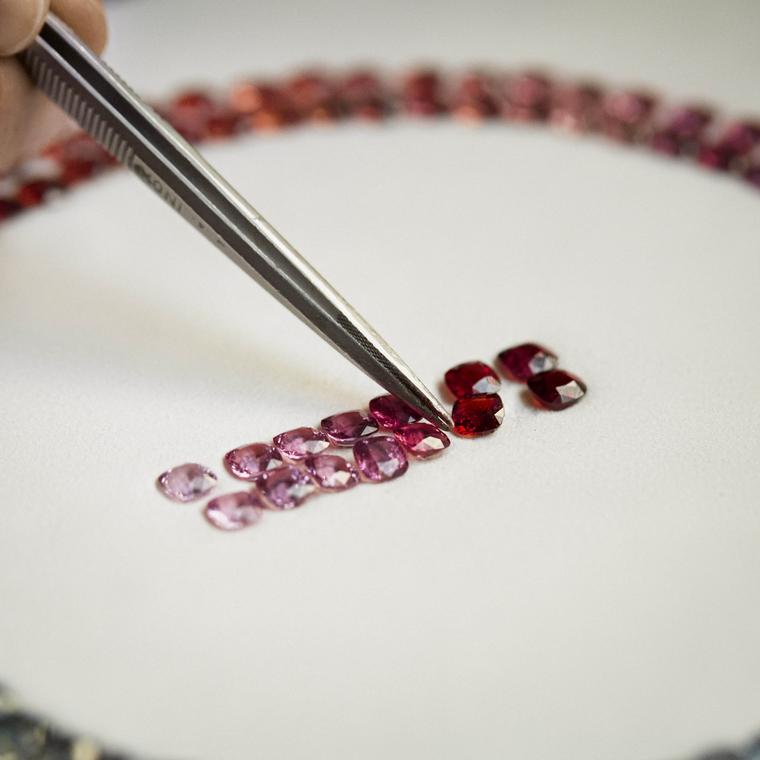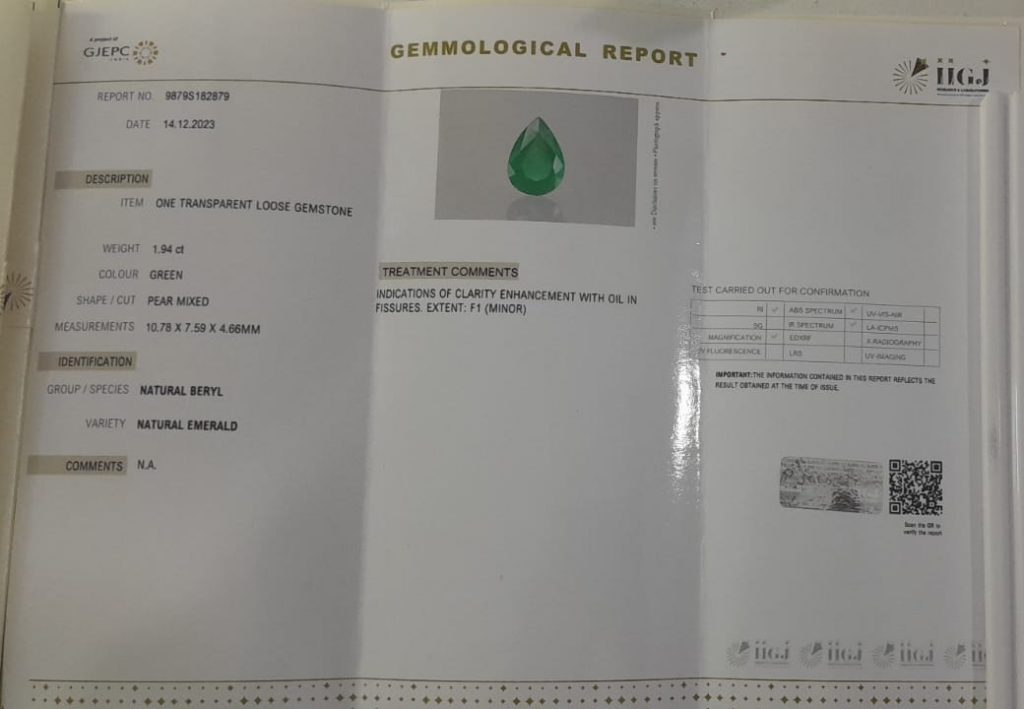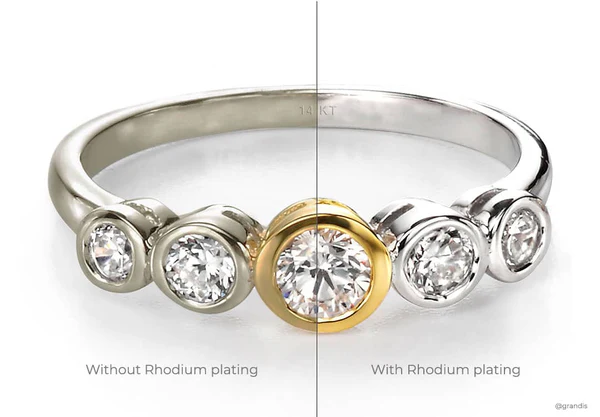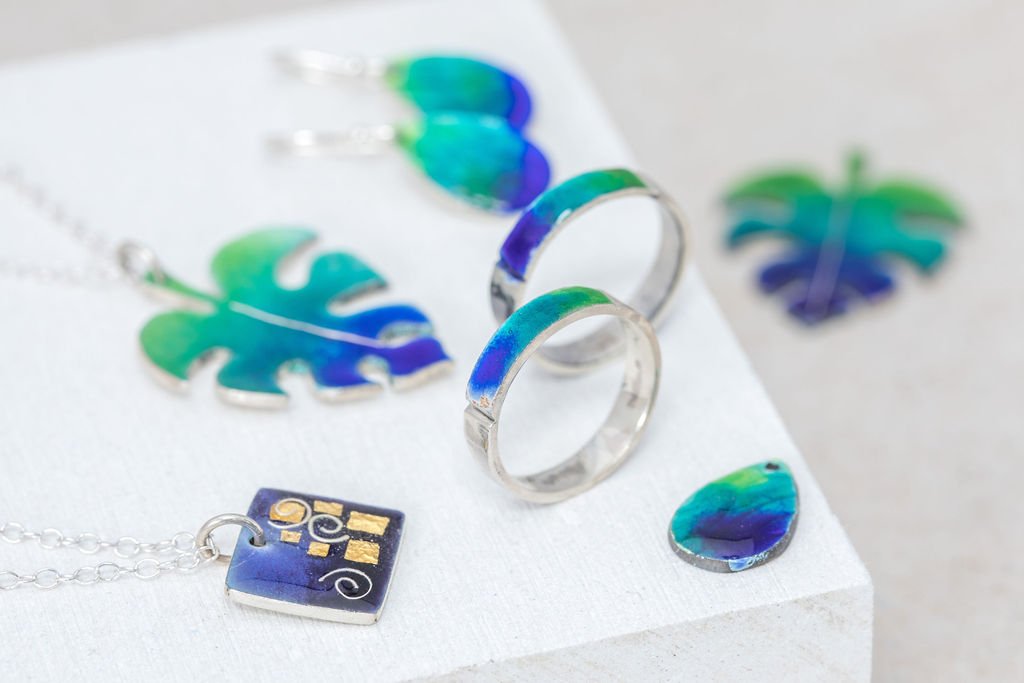Bhavya’s exquisite designers take inspiration from India’s prominent cultural tapestry. From nature’s state-of-the-art designs to architectural elements, each intricate element becomes the pivot of their inspiration. These ideas are then meticulously sketched by hand, marking the beginning of the journey toward the final jewellery design.
Once our designers achieve the final design, the next crucial step is to convert the 2D hand drawing to a 3D computer-generated design. Design modification, rectification and other alterations are accomplished at this step.
Moving towards the production stage, the CAD design translates into a wax model. The makers encase this wax model into a plaster or clay to form a mould. The mould gets heated at a high temperature as a result of which the wax melts and is replaced by molten metal.
Once our master makers create a hardened plaster mould, they fill hot metal – silver, gold, diamond, etc. into it. This process of pouring metal is done via a centrifugal casting or vacuum machine. The mould is then transferred to a utensil of cold water, which further disperses the metal uniformly, hardens it, and forms a solid shape.
Filing is a crucial step, where our makers cut, shape and smoothen the solid metal. In this finishing stage, we make use of filing tools, like files and burns, to dust off the excess metal and casting layer and achieve a smooth finish.
In this stage, we make the framework or Ghat of the jewellery piece. The framework helps us structure the sections or bring together separated structures using the soldering technique to get the final design.

Then comes the vital stage of selecting a captivating gemstone for the jewellery. The selection is typically based on the stone’s durability and appearance. However, when astrological factors drive the gemstone, we use the expertise of a seasoned astrologer.
Once we finalise the gemstone, we perform a laboratory test to examine its craftsmanship, physical features, and visible flaws, if any. We also evaluate the authenticity and composition of both the stone and the metal.

After we examined the gemstones, we put together all the sorted, matched, weighed, and sized stones to be set in the jewellery. The process is called bagging. Our speciality lies in deploying advanced techniques of segregating stones for the final jewellery. This keeps us in good faith of businesses.
On the completion of the bagging stage, our makers carefully attach the gemstones in the metal casting. Each gemstone is secured to sparkle in the jewellery for a lifetime and also exhibits its beauty by accentuating its colour, cuts, and clarity.

Once the stones are set, we add Rhodium plating to the jewellery’s surface via electroplating. Rhodium adds a protective layer to the jewellery to prevent it from the effects of abrasion. The plating kit has 4 vessels – 2 vessels contain the plating chemicals, while there is distilled water in the other 2 for rinsing.
Also called ‘Stringing’, Puwai is the final step in the creation of jewellery manufacturing. In this step, we bring all the pieces of the jewellery together to form one precious piece of art.

Once all the pieces are woven together, we turn to enamel application, an age-old technique in jewellery manufacturing. Enamel is applied on the gold sheet, which when heated at high temperatures fuses into the metal. It helps create intricate designs on the jewellery and is one of the reasons for its longevity and durability.
Quality control at the final stage is as crucial as at any of the above stages. By ensuring these checks, we make certain that the final manufactured jewellery adheres to the quality guidelines and meets the required standards. Workmanship, weight measurement, mechanical assessment, and visual inspection are the methods we adopt for quality control.
Bhavya Gems & Jewels is a manufacturer of Silver, Gold & Brass Jewelry located in Jaipur, India. Our teamwork has built a world-class manufacturing firm that specializes in high reliability and consistency for the world’s leading jewelry retailers & designers.
© Copyright – © 2025 by Bhavya Gems and Jewels, All Rights Reserved.